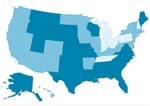business
$120 million Aetna settlement isn’t end of doctor pay dispute
■ The AMA and state medical societies sued because of the plan’s use of the Ingenix database for out-of-network payments.
A multimillion-dollar settlement is only the first step in ensuring that Aetna no longer uses flawed data to underpay physicians for out-of-network claims, according to an attorney representing the medical associations that brought the case.
The latest agreement for physicians who said they were shortchanged by a faulty database that determined out-of-network payments doesn’t cover injunctive relief with Aetna that would cover future actions, said Edith M. Kallas, an attorney for New York-based WhatleyKallas, one of the law firms prosecuting the case.
That part of the lawsuit remains to be settled and is working its way through the courts, Kallas said. It’s unclear when that will be resolved, but discussions are ongoing, she said. The monetary part of the lawsuit was agreed upon in early December.
The Litigation Center for the American Medical Association and the State Medical Societies joined multiple state societies in suing Aetna in 2009, after it and other insurers settled with the New York attorney general’s office over their use of a database operated by Ingenix, a UnitedHealth Group subsidiary, to set out-of-network rates. The New York settlement included a promise to fund an independent database, FAIR Health, to set rates. However, the medical societies, in U.S. District Court in Newark, N.J., sued Aetna, Cigna and WellPoint after the New York settlement for money physicians lost because of underpayments as a result of Ingenix.
Aetna is the first plan to settle in those series of lawsuits. In 2009, UnitedHealth Group settled an earlier class-action suit for $350 million brought by the AMA Litigation Center and state societies regarding Ingenix and out-of-network payments.
As part of the Aetna lawsuit, the AMA and medical societies in California, Connecticut, Florida, Georgia, New Jersey, New York, North Carolina, Tennessee and Texas demanded greater transparency and understanding about how insurance companies calculate out-of-network rates. “They want patients and [physicians] to know exactly how insurance companies calculate out-of-network payments in real dollars and cents,” Kallas said.
As part of the settlement, Aetna agreed to set up three funds, totaling $120 million for physicians and others to make claims. Half of the money will pay for administrative and attorney fees, Kallas said. The other half will be split into two funds — a $40 million general fund and a $20 million prove-up fund.
Individual physicians who have less than $750 in claims or group practices with less than $1,000 in claims will receive money from the general fund up to $40 per year since 2003. Those with higher claims will receive money from the prove-up fund based on submitted documentation.
The Connecticut State Medical Society said the latest monetary settlement may act as a “springboard for renewed effort to improve transparency and communication with physicians and patients in the health insurance claims process.”
“CSMS will not rest until Aetna opens a new chapter in its relationships with physicians and patients — one with a framework based on transparency, communication and understanding,” Matthew C. Katz, CSMS executive vice president and chief operating officer, said in a statement.
Aetna said the settlement contains no admission of wrongdoing on its part. No wrongdoing was admitted in the earlier UnitedHealth Group settlement, as well as in the multiple plan settlements with the New York attorney general’s office.












